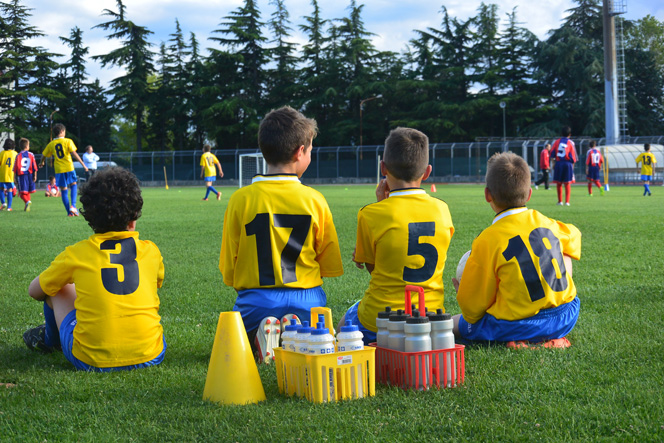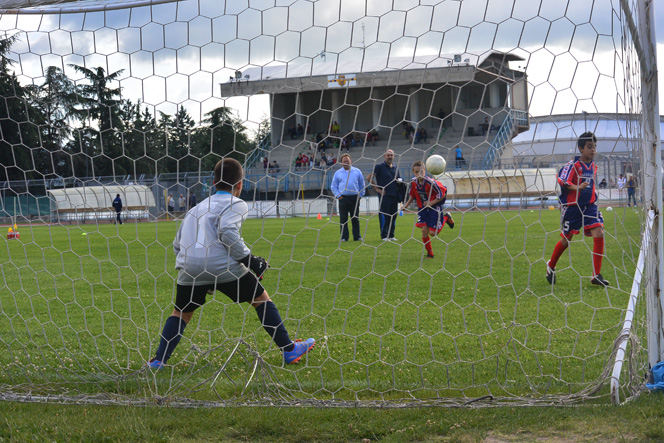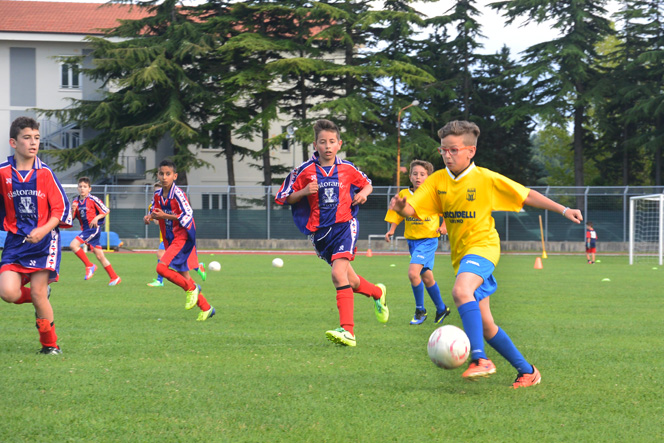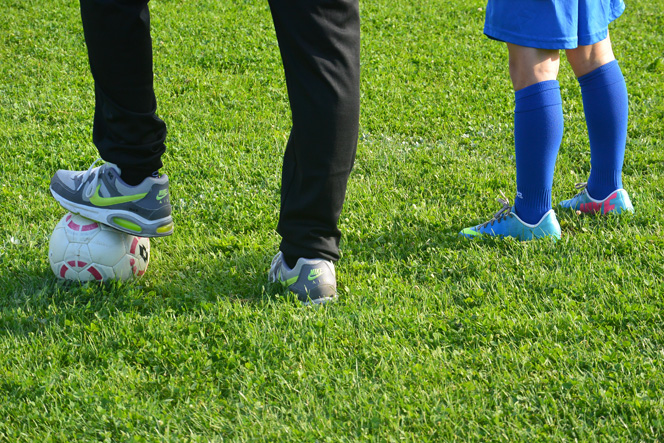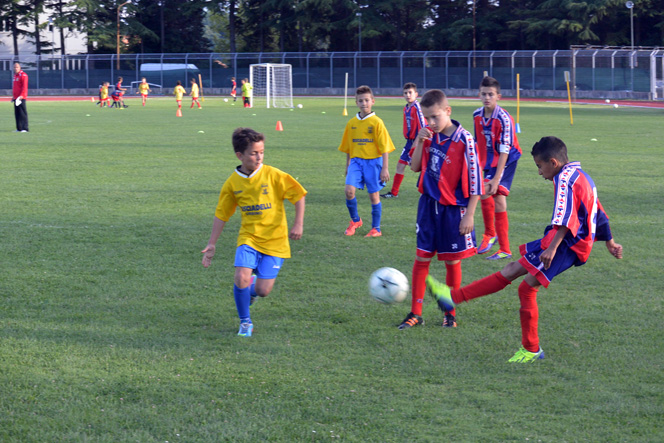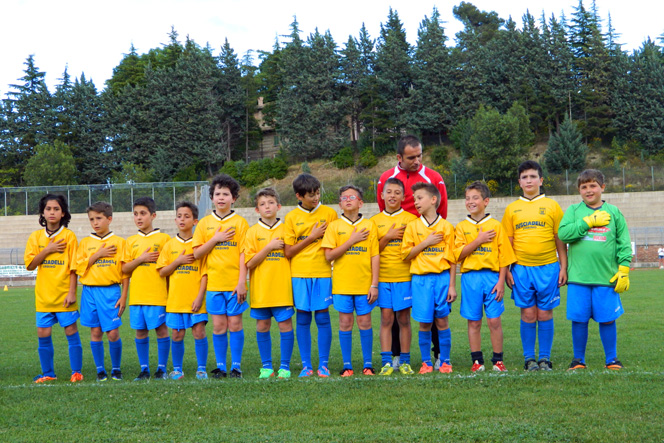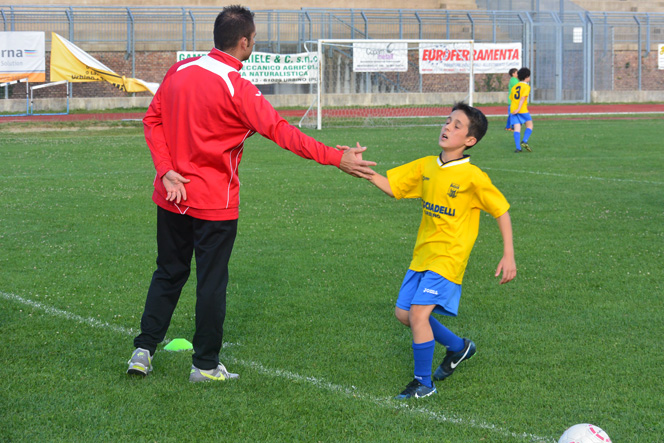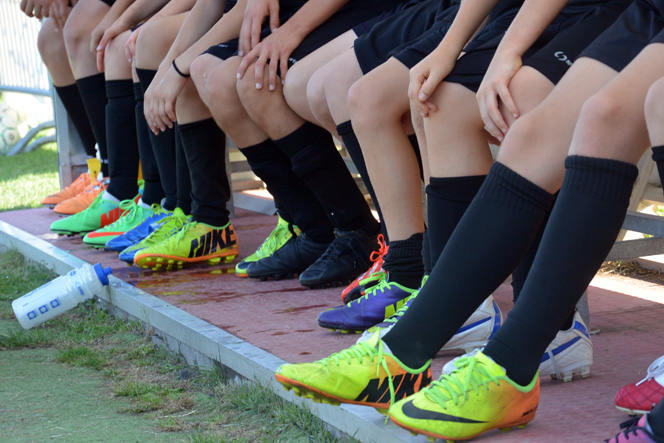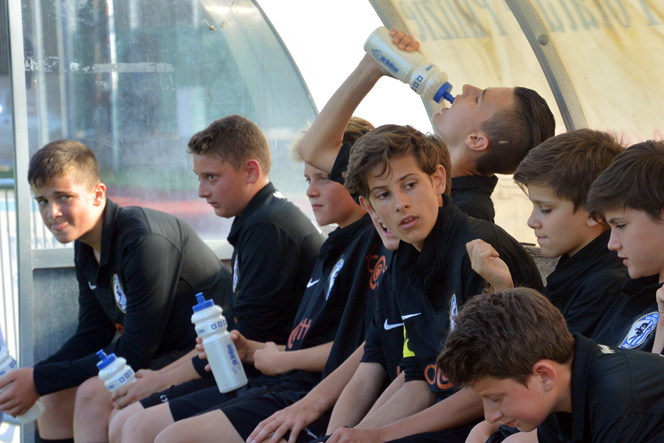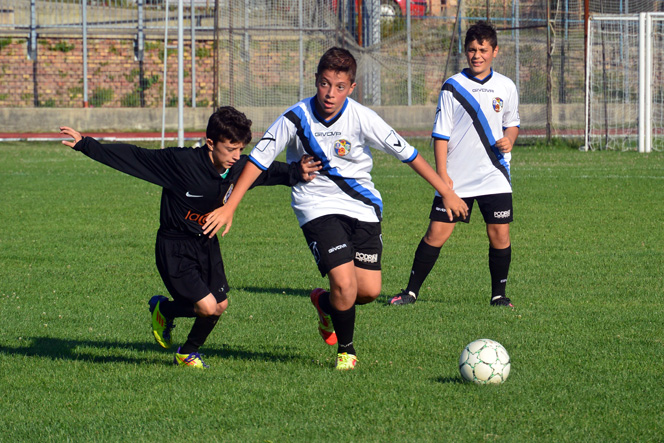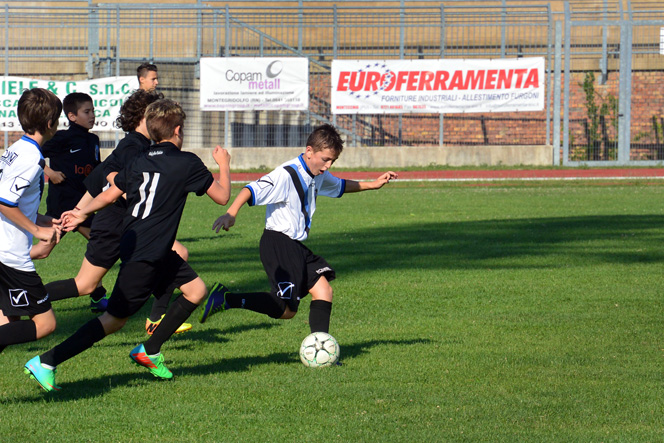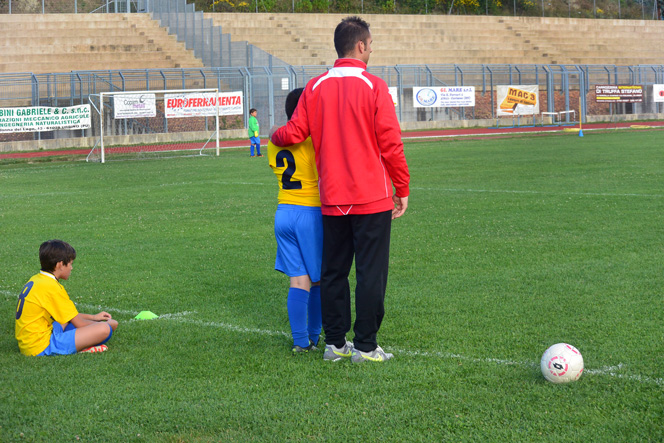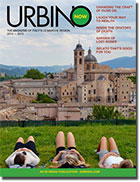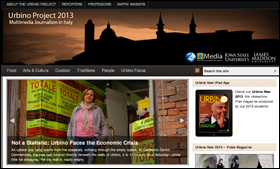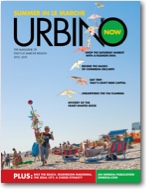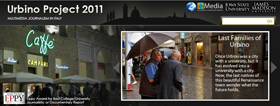Youth Soccer With a Kick
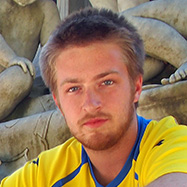
A new league in Urbino has a refreshing take on creating soccer stars and young men
On a typical June Saturday, the American youth soccer scene plays out like this: Throngs of minivan-racing, Starbucks-fueled soccer moms and emotionally over-involved fathers drag their children to the pitch at dawn for a day of intense competition, dehydration, and worst of all—lack of discipline.
But as a spectator approaches the practice field of Urbino’s newest youth soccer league, NFT il Sandro De Crescentini, there is only silence punctuated by the occasional whistle blast. Parents stand on the sidelines, watching pensively while their children’s cleats stomp through the short grass. On the field, boys of all ages call commands to each other as drills move precisely and at a breakneck pace.
Unusual in this soccer-crazed nation but popular in the Marche, the training philosophy that these young boys follow puts teamwork, training, and fun ahead of competition. They do not even compete until they are 13 years old. No American parent would put up with this.
Nobody really knows when this philosophy was born, but they know who created it. Sandro De Crescentini was a well-known cardiologist in Le Marche, and he was recognized around Urbino as a family man with a strong sense of community. He was also an avid coach of youth football—as soccer is called in Italy—and he headed the local team from 2006. At some point, he created a training philosophy based on teamwork, professionalism, and respect. De Crescentini’s philosophy sprang from his sense of family belonging, and he was able to transplant that directly to football. He did not set out to create or institute a set of ideals; his attitude and loving nature just rubbed off onto his young football players. Sadly, De Crescentini died on January 20, 2008, from a heart attack. In August 2013, the league was renamed in his honor, and his philosophy lives on.
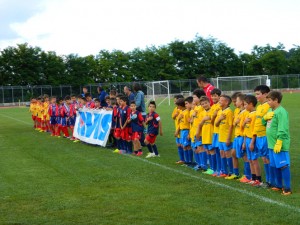
Players from Sandro De Crescentini and ASD Alto Metauro get ready to face off in the 2003 age group tournament. Age grouping is done a bit differently in the US.
The current head coach, Stefano Mundula, explains that this unusual training includes a seven- to eight-year “base” program starting at age 5. Throughout the year, these young football players work on their tactics, juggling, ball control, and having a lot of fun with practice. They are encouraged to try new things during practice, because, says Mundula, “We want to teach them to love the game on their own. It cannot be forced.” The boys do not play any competitive football except during season-ending tournaments. Even these tournaments are not like American tournaments. The Urbino boys play teams from Fermignano, Pesaro, and other nearby cities, but everyone gets playing time, and the coaches keep things light. There are no trophies, no referees, just fun. “Winning is just the final product…there are many other things to be focused on,” says Mundula.
The period between ages 5 and 12 is critical for proper skill development, says Mundula. “From 5 to 12, what is particularly looked after is this overall building of the player,” he says. “There are some phases from 5 to 12 that are very sensitive.” He focuses on the base training, but the program is much more holistic, covering “both physical and mental training.” He says, “Tactics cannot exist without technique, and technique cannot exist without physical coordination.” Mundula is a teacher, and wants all of his pupils to understand that mental sharpness as well as coordinated strength is required to play football, as is the group mentality that is so important to this league.
“All of these boys are going to become men,” he adds. “But only one in 100,000 will become a professional football player. We must prepare them for what they are guaranteed to become.”
Enrica Rossi, a University of Urbino language professor and mother of one of the players, agrees that this approach is not just about football: “It is an entire environment that is absolutely positive for the boys.” She believes that her 9-year-old son Giacomo has improved his “teamwork skills, and his team sensitivity,” and has matured since joining the club.
Throughout the Marche, there are other football clubs that subscribe to similar philosophies. For example, Giuseppe Cappelloni, president of the team ASD Alto Metauro that includes boys from three villages near Urbino, describes much of the same approach as Mundula. But he puts a particular emphasis on unity. He believes that the more united the team is, the stronger it will be. “We promote unity in every sense of the word, and try to give the boys an option that will help them grow,” says Cappelloni.
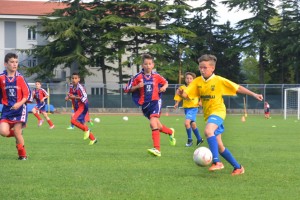
A youngster in Urbino’s new league controls the ball with ease as he passes down the sideline. Until age 12, these boys do not compete, but work only on tactics and skills.
Cappelloni also attempts to instill an attitude of what he calls “strong training” in his young players. This strong training means that there is no shouting and no screaming; only fun. It teaches them to be disciplined and to love the game. The older they get, the more intense the training becomes, so that they can stay competitive with the rest of Italy.
In other Italian cities, however, clubs train their youngsters very intensely. Mundula says that many football clubs in neighboring cities do not have the same level of discipline and attention to details that do not pertain directly to football, such as mental training.
Nicola Petricca, a freelance sports writer based in Urbino and avid football player, agrees. He says that in bigger football cities such as Rome, Milan, or Turin, teams use strategies and mentalities more like those the U.S., focusing on individual improvement rather than fun and cohesion. These methods include as many as five practices per week, many competitive tournaments, and other approaches that put stress on some of the youngest boys in the league. “The boys feel the pressure to move to the next level—they are playing football in towns with big, professional teams,” says Petricca, who once had the opportunity to move on to a higher level of play but was hindered by a knee injury. He says these leagues have a high turnover rate because the children are forced to play competitively from Day One and they do not learn to love the game like Marche players do.
Back on Urbino’s football pitch, the young calciatori—players—are having their season-ending tournament. The stands are packed with fans, a food stand serves drinks and crescia sfogliata, a DJ is blasting, and the players are warming up on the field. The tournament stretches two weeks, and toward the end, the older players are afforded an opportunity to show the fruits of their training. The players from NFT il Sandro De Crescentini and ASD Alto Metauro are lightning fast and have amazing ball control, sending it flying with a twitch of the foot. A ball rips into the back of the net, and the fans explode in unison.
This article also appears in Urbino Now magazine’s Sport section. You can read all the magazine articles in print by ordering a copy from MagCloud.



